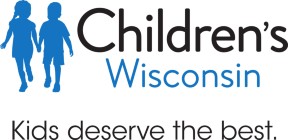
The Cord Blood Program at Children's Wisconsin is one of the few cord blood banking initiatives in the United States, and is offered to families free of charge.Credit: Children's Wisconsin
Joy Lincoln, director of cardiovascular research at the Herma Heart Institute at Children’s Wisconsin, has seen how clinicians and scientists can come together to tackle life-altering heart diseases in kids. While the groups are typically siloed — physicians at the hospital, researchers in their labs — collaboration is front and centre at Children’s Wisconsin. “These groups talk now more than they ever have,” she says. The conversation is paying dividends for patients with congenital heart disease.
These conditions are among the most common birth defects, affecting 1% of all live births in the United States each year. But diseases that were once fatal are now manageable, meaning children born with underdeveloped ventricles or significant structural defects are now surviving and thriving into middle age and beyond. Today, the Herma Heart Institute’s oldest patients are in their eighties, and its adult congenital heart disease programme continues to expand.
Joy Lincoln is director of cardiovascular research at the Herma Heart Institute.Credit: Children’s Wisconsin
Genetic insights
The Wolfe family advocates for supporting research endeavours at the Herma Heart Institute. Their 17-year journey with Children’s Wisconsin shows how precision medicine can untangle a complex history of congenital heart disease.
During Stephanie Wolfe’s pregnancy with twin boys in 2006, she underwent early screening to see whether her sons might have a heart condition like her husband, Chris, who had been born with an aortic defect. Her first-born, Caleb, did not, but her second son, Tyler, was born with two outlets on his right ventricle and underwent several corrective surgeries. Later, the couple’s daughter Emma was born with an underdeveloped left ventricle and a narrow aorta that likewise required ongoing treatment.
The Wolfe family agreed to have their genomes sequenced to generate insights about their genetic background and risk of heart conditions.Credit: Children’s Wisconsin
Several family members had their genomes sequenced through collaborative work led by a cardiac researcher and a cardiothoracic surgeon at the Herma Heart Institute, Aoy Tomita-Mitchell and Michael Mitchell. The results revealed a genetic risk gene in affected members of the family and led to the discovery that almost 10% of other unrelated patients with single ventricle malformations carry different variants in the same gene. Interestingly, other family members also carry the variant, but didn’t have any cardiac disease. “We don’t know why that is,” says Lincoln, “but we get excited when we see a family history, because we get to put our research hats on.”
Using fibroblast cells isolated from each patient, the team applied gene editing to correct the genetic variant and restore normal function in the cells, and also to insert the variant in healthy cells and observe the resulting cell behaviour — thus proving a causal link between the genetic variants and the diseases (Kim, M-S et al. Front. Cell Dev. Biol. https://doi.org/ghg92h; 2020).
Inspiration from individuals
Emma was also the inspiration for a new test to monitor heart transplant rejection. Not yet three years old, Emma was preparing for her third major surgery, which involved taking a biopsy of her heart using a vascular catheter, similar to how doctors traditionally test for transplant rejection. But her team realized that, due to complications from her previous surgeries, they couldn’t access her heart through the normal pathways. They needed another way to test for rejection if she received a transplant.
The dilemma was solved with a blood test that compares the amounts of patient DNA and donor DNA circulating in the blood. A higher proportion of donor DNA signals that a transplant risks failure. Emma was ultimately discharged without needing a transplant or the blood test, and today is an active 13-year-old who enjoys dancing. The test is ready if Emma, or another patient, needs it.
Cardiac researcher Aoy Tomita-Mitchell jointly led the Wolfe family's genome sequencing project.Credit: Children’s Wisconsin
“These programmes help pull everything together and let teachers know what type of accommodations might be needed to help these children succeed outside our walls,” says Peterson.
Banking on the future
Last year, the Herma Heart Institute broadened its precision approach by launching the Cord Blood Program, one of only a few initiatives in the country collecting cord blood and tissue from congenital heart disease patients during births. Typically, families pay upfront and annual fees to bank samples. But through a partnership with a cord blood storage bank (Cord Blood Registries), Children’s Wisconsin offers the service for free. In exchange, scientists use some samples to pursue research questions.
Cord blood is a rich source of stem cells, and scientists have learned to differentiate them into cardiac cells and graft them on to ‘bioscaffolds’, with the goal of making valves, vessels, or heart tissue using patients’ own cells.
Traditional implants aren’t able to grow with children, says Peterson. Young patients end up needing extra surgeries to replace implants they have outgrown. Developing personalized implants will not only reduce the number of surgeries, but limit the chance of rejection and other complications as well.
The technology isn’t quite there, but it’s close enough to start collecting these resources now. “We can't go back and collect this from patients who are being born today,” says Peterson. “So why not start collecting this material for patients who will need interventions throughout their lives?”
Lincoln says the programme has amassed more than 50 samples within just 18 months of approval; they have been used to probe developmental pathways of cardiac cells and what goes awry in congenital heart disease. It’s an exciting moment, she says, adding that it’s only possible because patients are willing to share their medical histories. “Patient families are in a position to make a difference. What we learn from them will help the next generation.”


